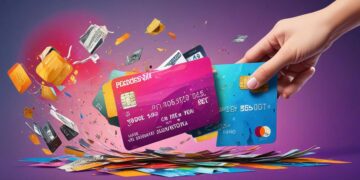Long-Term Budget Hacks That Actually Work

Key Strategies for Effective Budgeting
Managing your finances can feel overwhelming, especially when juggling various expenses. However, with the right strategies, you can easily create a sustainable budget that keeps you on track. Here are some effective long-term budget hacks that will help you maximize your savings.
Automate Savings
Automating your savings can significantly reduce the stress of putting money aside. By setting up automatic transfers to your savings account from your checking account each month, you can prioritize saving without even thinking about it. For example, if you choose to transfer $100 every payday, you will effortlessly accumulate $1,200 over the course of a year. Many banks offer this feature, allowing you to adjust the transfer amounts and frequency to fit your budget. Over time, these deposits can add up, helping you achieve financial goals like vacations, new cars, or home renovations.
Track Your Spending
To have a clear understanding of where your money goes, tracking your spending is crucial. Use budgeting apps like Mint or YNAB (You Need A Budget), or a simple spreadsheet to categorize your expenses. By monitoring your monthly spending habits, you may discover unexpected patterns, such as excess spending in eateries or subscriptions that you no longer use. Identifying these areas allows you to make informed decisions and adjustments. For instance, if you realize you’re spending $300 monthly on takeout, you might decide to allocate just $150 and cook more meals at home, preserving both your health and finances.
Grocery Strategies
One area where many people can save significantly is their grocery expenses. Implementing grocery strategies such as meal planning and creating shopping lists can help you avoid impulsive purchases at the store. Start by setting aside a specific time each week to plan your meals, making sure to include recipes that utilize similar ingredients to minimize waste. By crafting a shopping list based on your meal plan, you’ll be less tempted to deviate from your budget during your shopping trip. Additionally, consider using coupons and comparing prices, which can lead to substantial savings over time. For example, by committing to a budget of $75 weekly and shopping strategically, you might save an extra $20 monthly.
Set Clear Goals
Establishing defined savings goals can provide motivation and direction in your budgeting journey. Whether you’re saving for a well-deserved vacation, a new car, or an emergency fund for unforeseen circumstances, setting clear goals makes it easier to stay committed. For example, if you want to save $3,000 for a vacation in one year, breaking it down into a monthly savings target of $250 makes it attainable and measurable. With specific goals in mind, you can focus your budget efforts to make these dreams a reality.
These simple yet powerful techniques can lead to significant improvements over time. Remember, it’s all about making small, consistent changes that fit your lifestyle. By applying these hacks, you’ll find budgeting not only manageable but also rewarding.
Ultimately, a well-structured budget is the cornerstone of financial security. As you learn and implement these strategies, you’ll build a foundation that supports your long-term goals. Ready to dive into these hacks? Let’s explore how each can transform your budgeting approach.
SEE ALSO: Click here to read another article
Practical Techniques to Enhance Your Budgeting Journey
Budgeting isn’t just about restricting your spending; it’s about creating a roadmap for your financial future. With effective techniques in your toolkit, sustaining a budget becomes more manageable and can even foster excitement about reaching your financial goals. Below are key tactics to help you enhance your budgeting approach.
Evaluate and Revise Regularly
Regularly evaluating and revising your budget ensures that it evolves with your financial circumstances. Life changes—such as a new job, a change in income, or unexpected expenses—should prompt a review of your budget. A quarterly review allows you to check if your income levels have shifted or if certain expenses have increased, providing an opportunity to make necessary adjustments. For instance, if you receive a raise, consider allocating a portion of the increase to savings, thereby enhancing your financial stability. The ability to adapt and refine your budget keeps you aligned with your goals and prevents financial stress down the line.
Utilize the 50/30/20 Rule
One of the easiest budgeting techniques to manage your finances is the 50/30/20 rule. This rule suggests allocating your after-tax income as follows:
- 50% to Needs: This includes essential expenses like housing, utilities, groceries, and transportation.
- 30% to Wants: This category encompasses non-essential expenses such as entertainment, dining out, and hobbies.
- 20% to Savings and Debt Repayment: Prioritize contributions to savings accounts and debt repayments to build financial resilience.
Following this rule simplifies your budgeting process by providing clear guidelines on how much can be allocated to each category. This clear structure is particularly useful in preventing overspending and keeping your savings on track.
Dave Ramsey’s Envelope System
For those who prefer a more tangible approach, using Dave Ramsey’s envelope system can be a game changer. This method involves designating cash for specific spending categories and placing the allocated amounts into envelopes. For example, you might have one envelope for groceries and another for entertainment. Once the cash in an envelope is gone, you can no longer spend in that category until the next budgeting cycle. This method encourages mindfulness about spending and helps you stick to your budget without the temptation of using a credit card.
Take Advantage of Reward Programs
Many credit cards and retailers offer rewards programs that can significantly benefit your budget if used wisely. Taking advantage of these programs can provide cash back, discounts, or points that can be redeemed for future purchases. However, it’s essential to use these programs responsibly—avoid overspending just to earn rewards. For example, if you choose to use a credit card that offers 2% cash back on groceries, you can strategically plan your grocery spending to reap those benefits while staying within budget.
Implementing these practical budgeting approaches can lead to more organized finances and pave the way for future prosperity. By evaluating your budget regularly, following structured guidelines like the 50/30/20 rule, and exploring engaging methods such as the envelope system, you tend to develop a budget that not only works but truly enhances your financial health.
CHECK OUT: Click here to explore more
Smart Budgeting Strategies for Sustained Success
Incorporating smart strategies into your budgeting process can make a significant difference in your financial journey. Understanding and applying these hacks not only simplifies budgeting but also empowers you to take control of your financial health over the long term. Here are some additional techniques that can yield impressive results.
Automate Your Savings
One of the most effective ways to ensure that you stick to your savings goals is by automating your savings. By setting up automatic transfers from your checking account to your savings account right after payday, you remove the temptation to spend those funds. For example, if you start with just $50 a paycheck and gradually increase that amount, you can build a robust emergency fund or save for a big purchase without actively thinking about it. Automation takes the manual effort out of saving, making it a seamless part of your financial routine.
Track Your Expenses with Budgeting Apps
In today’s digital age, utilizing budgeting apps can help you maintain and monitor your budget effectively. These applications allow you to track your spending in real-time, categorize expenses, and establish spending limits. Popular apps like Mint, YNAB (You Need A Budget), or PocketGuard offer user-friendly interfaces, making it easy even for those who are just starting their budgeting journey. For instance, you can set specific alerts for when you are nearing the limits of your categories, helping you avoid over-expenditure.
Plan for Irregular Expenses
Budgeting isn’t solely about managing regular monthly bills; it also involves preparing for irregular expenses that might arise throughout the year, such as car maintenance, holiday gifts, or medical bills. Create a separate fund for these expenses by estimating their costs and setting aside a small amount each month. By doing so, you cushion your budget against unexpected financial hits. A simple example would be if you set aside $25 a month; by the end of the year, you’ll have saved $300 for those irregular but predictable expenses.
Create a Buffer for Your Budget
Introducing a buffer into your budget can be a lifesaver during financially tight periods. This is an extra amount you set aside each month, typically 5-10% of your overall budget, to accommodate any surprise expenses or emergencies. For instance, if your budget is $2,000, allocating an extra $100 to $200 as a buffer gives you an essential cushion that allows for flexibility without derailing your financial plan.
Review Subscriptions and Memberships
Many people overlook ongoing subscriptions and memberships that drain their finances. Take the time to review services such as streaming platforms, gym memberships, or premium applications that you may no longer use or need. Canceling just one or two unused subscriptions can free up a significant portion of your budget each month. For example, if you find that you have three subscriptions averaging $15 each, that’s $45 a month, or $540 a year, that could be redirected to savings or debt repayment.
Incorporating these strategies into your budgeting practices can lead to improved financial stability and peace of mind. By automating savings, leveraging technology, anticipating irregular expenses, creating financial buffers, and regularly reviewing subscription services, you can transform the way you approach your budget and work toward long-term financial success.
CHECK OUT: Click here to explore more
Conclusion
In the journey toward financial stability and prosperity, understanding and implementing long-term budget hacks can be a game changer. The strategies discussed throughout this article highlight the importance of building a structure that accommodates both predictable and unpredictable financial needs. Whether it’s through automating your savings, using cutting-edge budgeting apps, or planning for those pesky irregular expenses, these techniques provide the framework necessary to empower your financial decisions.
Additionally, establishing a buffer in your budget and reviewing recurring subscriptions not only brings flexibility but also promotes awareness of your spending habits. Being proactive rather than reactive with your finances allows you to navigate economic uncertainties with confidence. Remember, the key to successful budgeting lies not just in tracking your expenses but in creating a holistic approach that aligns with your long-term financial goals.
As you embark on your budgeting journey, consider these strategies as essential tools in your financial toolkit. Tailor them to fit your lifestyle and financial objectives, and don’t hesitate to adapt your methods as your situation evolves. With dedication and time, you’ll find that these budget hacks will not only improve your financial health but also provide peace of mind. Embrace the power of informed budgeting today, and take the first step towards a more secure financial future!

Linda Carter is a writer and financial consultant specializing in personal finance and money management. With years of experience helping individuals and families achieve financial stability and make informed decisions, Linda shares her expertise on the True Metronome platform. Her goal is to empower readers with practical advice and strategies to take control of their finances and build a secure future.





